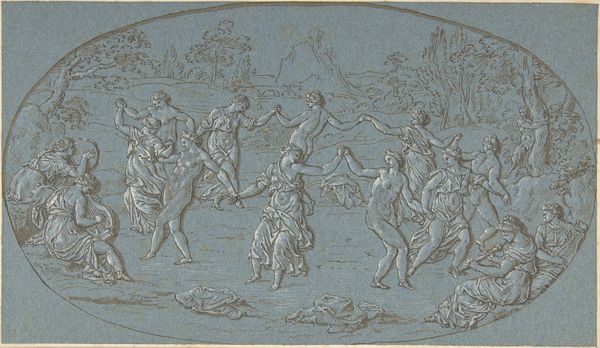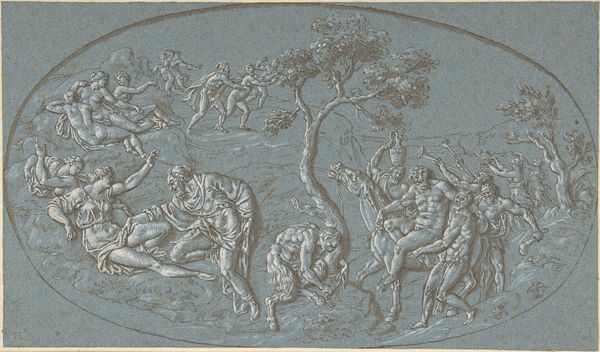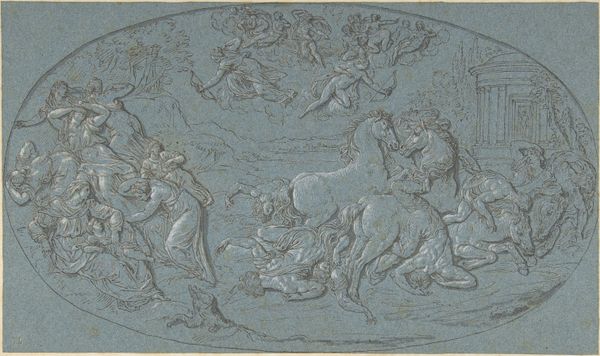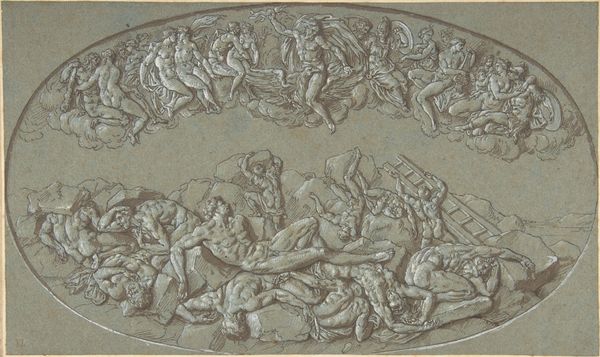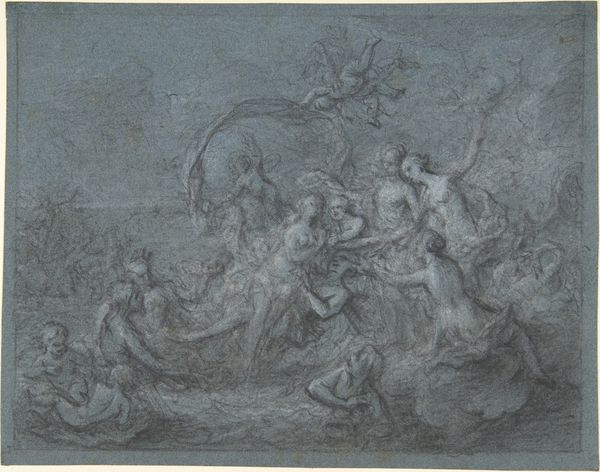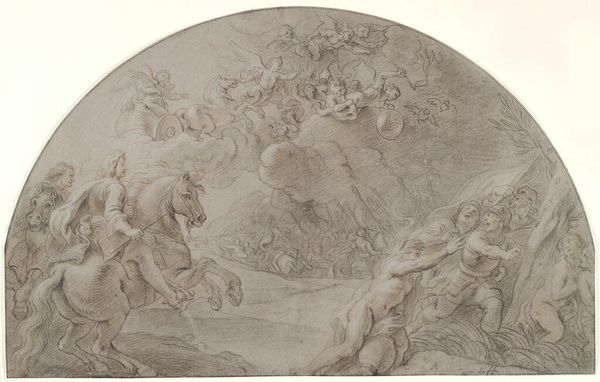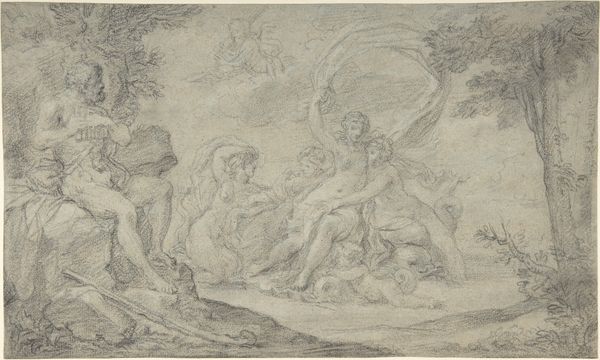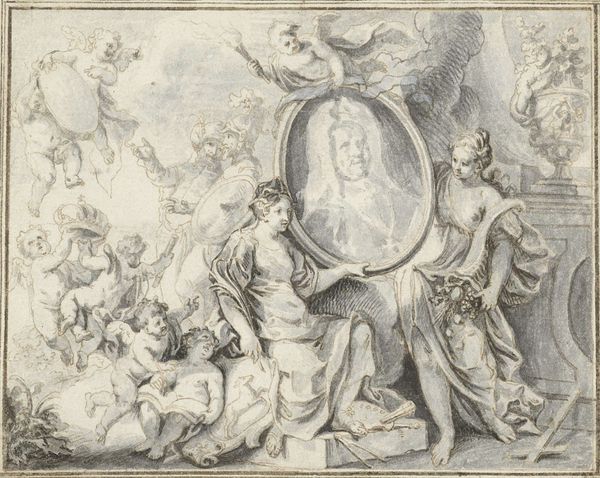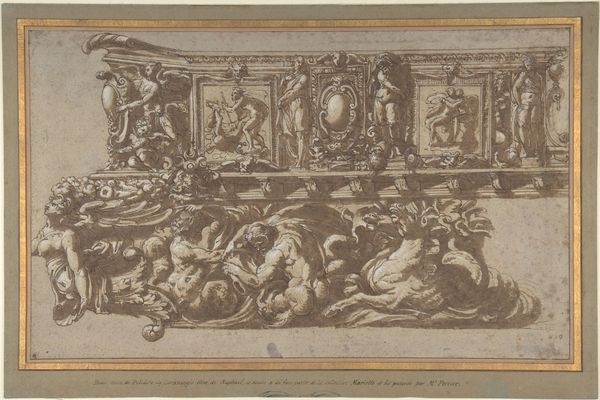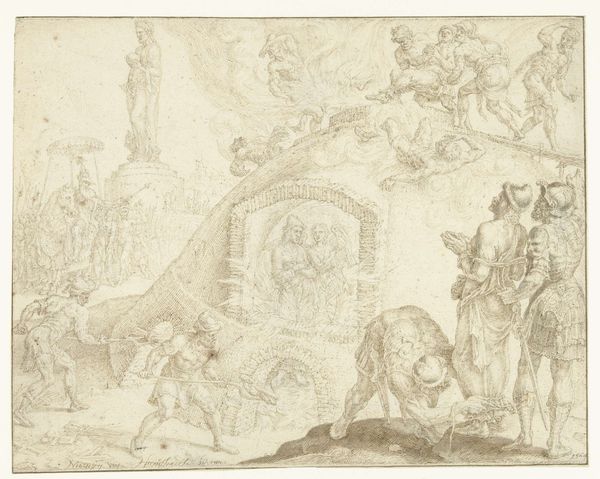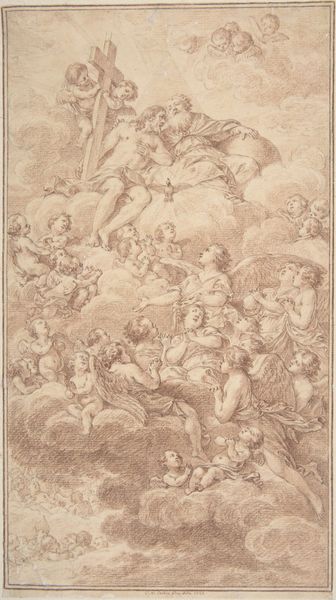
drawing, print, ink
#
drawing
#
allegory
#
baroque
#
ink painting
# print
#
pen sketch
#
female-nude
#
ink
#
history-painting
#
nude
#
male-nude
#
erotic-art
Dimensions: sheet: 6 5/16 x 10 3/4 in. (16 x 27.3 cm)
Copyright: Public Domain
Editor: So, here we have Bernard Picart’s "Feast of the Gods," created sometime between 1693 and 1733. It's an ink drawing, almost monochromatic in its cool blues and greys. The whole scene, framed within this oval, gives off a sense of ethereal detachment. What really stands out to you when you look at this? Curator: The enduring power of the classical feast! We see it resurface through history, from illuminated manuscripts to Renaissance paintings, as an opportunity to portray harmony, abundance, and even divine judgment. Does the arrangement of figures around the table spark any associations for you? Editor: Well, it’s very symmetrical, but not perfectly so. The groupings of figures on either side of the table mirror each other somewhat, but there's a lot of variety too. The eye keeps moving. Curator: Indeed. And consider the presence, or rather the repeated *absence* of drapery. These aren't simply decorative figures; nudity signified heroism and idealized forms, recalling Greek and Roman sculpture and reminding the viewer of cultural ideals of beauty, strength, and virtue. Also, look closely. Do you recognize any attributes linked to specific gods and goddesses? Editor: I think I see Cupid floating around up there with some grapes... and is that Zeus? It’s hard to be sure, everyone’s very lightly sketched. Curator: The loose, almost dreamlike quality of the drawing emphasizes the mythological nature. They exist in our imagination, our collective memories and, of course, as representations of ideal concepts like love, wisdom, and power. In viewing art, are we chasing an ever-present ideal that perhaps fades further away with our search? Editor: That’s an interesting question! Thinking about the repeated depiction of this imagery helps reveal something about cultural values, but also that human longing for perfection. Thanks, I hadn't considered it in that way. Curator: The ability of symbols to outlive their creators reminds us that our interpretations, too, will contribute to the ever-evolving legacy of this “Feast of the Gods.”
Comments
No comments
Be the first to comment and join the conversation on the ultimate creative platform.
